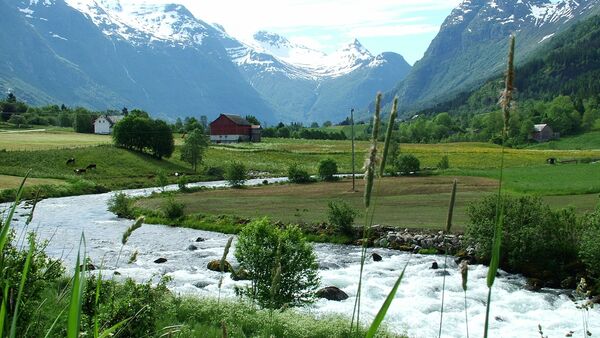According to researchers, no less than 1,170 alien species have successfully established themselves in Norway, whereas another 1,071 have yet to reproduce themselves. Ten alien species have established themselves in the particularly susceptible nature of the Svalbard Archipelago, which is home to the Svalbard Global Seed Vault. Additionally, 69 other invasive species have been observed there.
The spread of alien species has been explosive and is increasing faster than ever. One of the most well-known instances is the dissemination of American mink. In 1927, the first fur farm with American mink started in Norway. Within a few years, a number of animals escaped, whereupon the American mink established itself across the whole country. The mink is a voracious predator, feasting on fish, eggs, chicken and even adult birds.
The answer to this weeks #TuesdaysTrack is the American Mink! learn more about minks at https://t.co/DoHec6yUq8 pic.twitter.com/dAYur0Q2VW
— US Fish and Wildlife (@USFWSMtnPrairie) February 3, 2016
The brown snail, which is believed to have sneaked in together with imported soil, was first spotted in Norway in 1988 and has since spread across the country. The brown snail is a renowned killer of chicks in nests on the ground or in low bushes. Remarkably, parent birds do not do anything to stop the invader, since the phenomenon is so new that it is not yet recognized as a danger.
Yet another instance is the garden lupine, which it is currently forbidden to sell at garden centers. The strong and stalwart lupine has been known to replace original Norwegian wildflowers. The spread of alien plants has prompted authorities to ban a number of plants that tend to extend themselves outwards of gardens.
5 Aug 2016: #pnw lunch spot. No reservations required. #MtRainier #publiclands #wildflowers #lupine #ForestFriday pic.twitter.com/ScZmLQ16J1
— Public Land Lover (@publiclandlvr) August 5, 2016
"We know that invasive species are a growing problem, and now we have documented the developments here in Norway for the first time," Ellen Hambro, Director of the Environment Directorate, told Aftenposten.
Senior Adviser Tomas Holmern says it is very important to work preventively, as it gradually becomes more expensive to remove the "occupants" once they have established themselves, he stressed. Lastly, researchers fear that more species will establish themselves permanently as the climate continues to change. Warmer and wetter weather would mean that more species will be able to survive and reproduce.
Welcome, September, and welcome, autumn! #Longyearbyen #Svalbard #almostwinter #Arctic #landscape #unisvalbard pic.twitter.com/6rbNHXlA1U
— UNIS (@UNISvalbard) September 1, 2016



